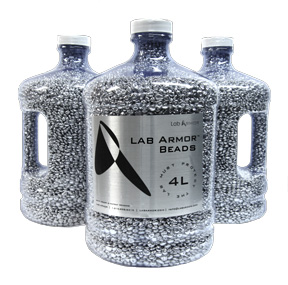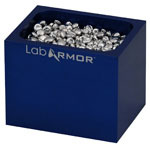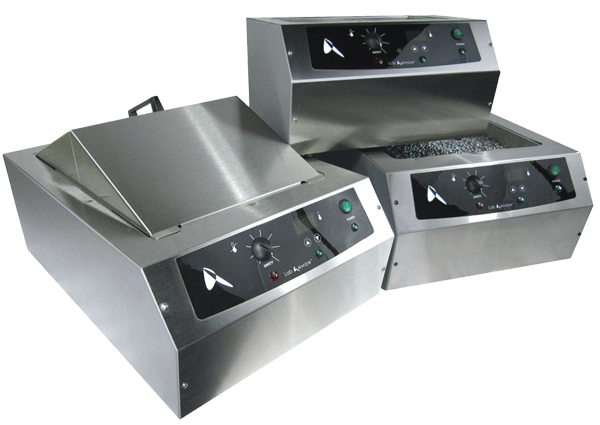The laboratory water bath is one of the most common pieces of equipment with a wide range of uses. From thawing cells, warming media to incubating samples; the water bath is a real workhorse.
Given its central role in so many laboratory activities, care must be taken to prevent the lab bath from becoming a breeding ground for microbial contamination.
One way to significantly reduce this concern is to shift away from a water based warming system and purchase metallic beads.
The Lab Armor brand (a division of Shel Lab) is probably the best known in the industry.
Lab Armor beads can be purchased alone...

as part of a small block insert..

or together with one of three different sized dry bath systems (available in a 6, 14 or 20L capacity).

They can be used in either hot or cold settings with the goal of completely replacing any liquid medium found in the lab.
Instead of watery, slushy ice, Lab Armor beads can be chilled and combined with ice packs for an equally effective, water-free cooling station.
One of the most important considerations is whether to keep your current water bath and replace the water with beads, or to make a wholesale upgrade to a Lab Armor dry bath.
Water is a much better conductor of heat energy than metallic beads. Therefore, water baths are constructed with just a single heating element at the bottom.
This can produce some cooler zones if beads are used instead of water. If sticking with your old bath, it is a good idea to spend time testing out the thermal conductivity of different locations to make sure you have as uniform temperature as possible.
Lab Armor bead baths are specially constructed with this issue in mind, and have heating elements surrounding the bath cavity.
Here are four of the most common faq's, and the answers supplied by the Lab Armor team:
1. What is the diameter of the beads?
Bead diameter varies from ~1mm to ~5mm.
Why is this important?
The variance in bead size helps to fill gaps between particles that would otherwise remain unfilled if the particle size was uniform.
2. How durable are the beads?
Quite durable. These beads will last for many years.
3. What is the proper care for Lab Armor beads?
Wash with either alcohol solution and rinse with water, or wash with a mild detergent and rinse with water. Allow to air dry. If you need to sterilize them, then dry-bake them in an oven at 200C for several hours, but do not autoclave.
4. Are Lab Armor beads autoclavable?
No! Autoclaving causes the outside surface of the beads to tarnish slightly. Although this does not affect the thermal qualities, it will make the beads a little tackier so they won’t flow as smoothly as before, so it’s a little harder to get sample tubes in and out of them or to pour the beads in/out of the bath for cleaning.
Whether a traditional water bath or a newer bead bath, Stellar Scientific has the know-how to get you set up for success!


